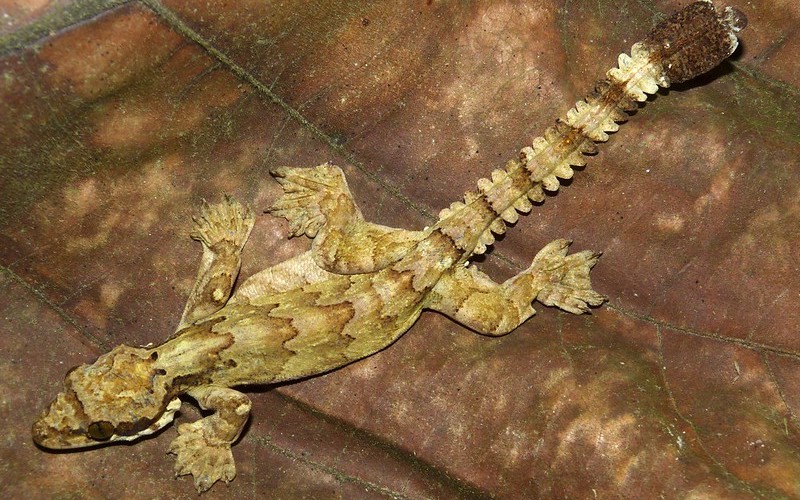Did you know that there are several types of flying Gecko? Flying Geckos that come from Southeast Asia aren’t just one species. In fact, scientists can’t agree on how many species of flying gecko there actually are – it is argued that there are between 5-9 species of flying Gecko.
Do Flying Geckos make good pets?
Flying Geckos make good pets and are relatively low maintenance compared to some other exotic pet species.
How Flying Geckos actually ‘fly’
Flying geckos have intrigued scientists ever since they were first discovered in the rain forests of Malaysia in 2001. Now, thanks to a new study by an international team of researchers, there is some insight into how these amazing lizards got their start. A research article by the team describes how a new form of “dead-stop” flying, which allows these geckos to glide between trees, has likely evolved independently in various isolated mountain ranges throughout Southeast Asia.
The researchers believe that this recently discovered type of gliding behavior (known as ” dead-stop ,” or DLV, flight) is a key to the success of these geckos and that it has probably been present in their population for millions of years. “We have shown that this particular type of gliding behavior can be an important survival tool, especially when large forest areas are fragmented by human activities,” said lead author Dr. Frank Natesh-Kumar of the University of Singapore.
The authors examined 13 flying gecko populations across Malaysia, Sumatra, Thailand and Borneo. While they found that each population exhibited a slightly different form of gliding behavior, it was always initiated from a perch and consisted of an initial rapid descent followed by a controlled glide between trees. “The new insights gained from this study not only help us to understand the population structure of flying geckos, but also highlight the ecological and environmental factors that may have led to the evolution of different forms of gliding behavior,” Dr. Natesh-Kumar said.
Research author Dr. Jodi Rowley of Australia’s Museum of Tropical Queensland, the co-author of a recent book on ” cryptic species ,” concurs. She said, “It is interesting to note that various forms of gliding behavior are now known from many different gecko clades around the world.”
Flying Gecko Evolution
Each group or population seems to have evolved from a single ancestor, likely millions of years ago. It is believed that this evolutionary pattern fits perfectly with a “founder effect” caused by the creation of isolated habitat pockets in mountain ranges, which they say would have led to different forms of gliding behaviour over time.
The authors also found that two closely related species—the large orange-brown C. crassicaudata and the smaller pale-yellow C. ornata —share a close ecological association with flying lemurs in Borneo, where they both occur (the former lives higher in the trees and is known to eat birds). In addition, large males of C. crassicaudata have much longer “toes” than smaller individuals of the same species. Curiously, males of C. ornata that fly between trees have unusually long “toes,” while smaller specimens with normal-sized “toes” do not glide. The authors suggest that the unusual toe length may be a special feature that evolved in the larger flying geckos to facilitate their unique style of gliding.
All of the authors agree that their new study helps to illuminate the complex history of gecko evolution and dispersal, especially in Southeast Asia. “While all geckos are capable of some type of gliding behavior, this paper provides evidence that flying geckos have evolved unique forms of gliding behavior multiple times throughout their evolutionary history, and that these likely arose due to the formation of isolated habitat pockets such as mountain ranges,” said Dr. Natesh-Kumar.
“Because geckos are abundant in Southeast Asia, we expect to find many more species with unique adaptations like dead-stop flight within this region,” he added. “We hope our study helps to shed more light on the diversity of lizards in this area, which is still being discovered.”
The study was funded by the National University of Singapore and their findings are published in a paper titled ” Gliding Behavior in Flying Lizards ( Sauria : Draco )” in Volume 170, Issue 3 of the Journal of Zoology.
If you enjoyed this article you might also like to read about keeping a gecko pet and German Giant Bearded dragon


1 thought on “Introducing the Flying Gecko of Southeast Asia”